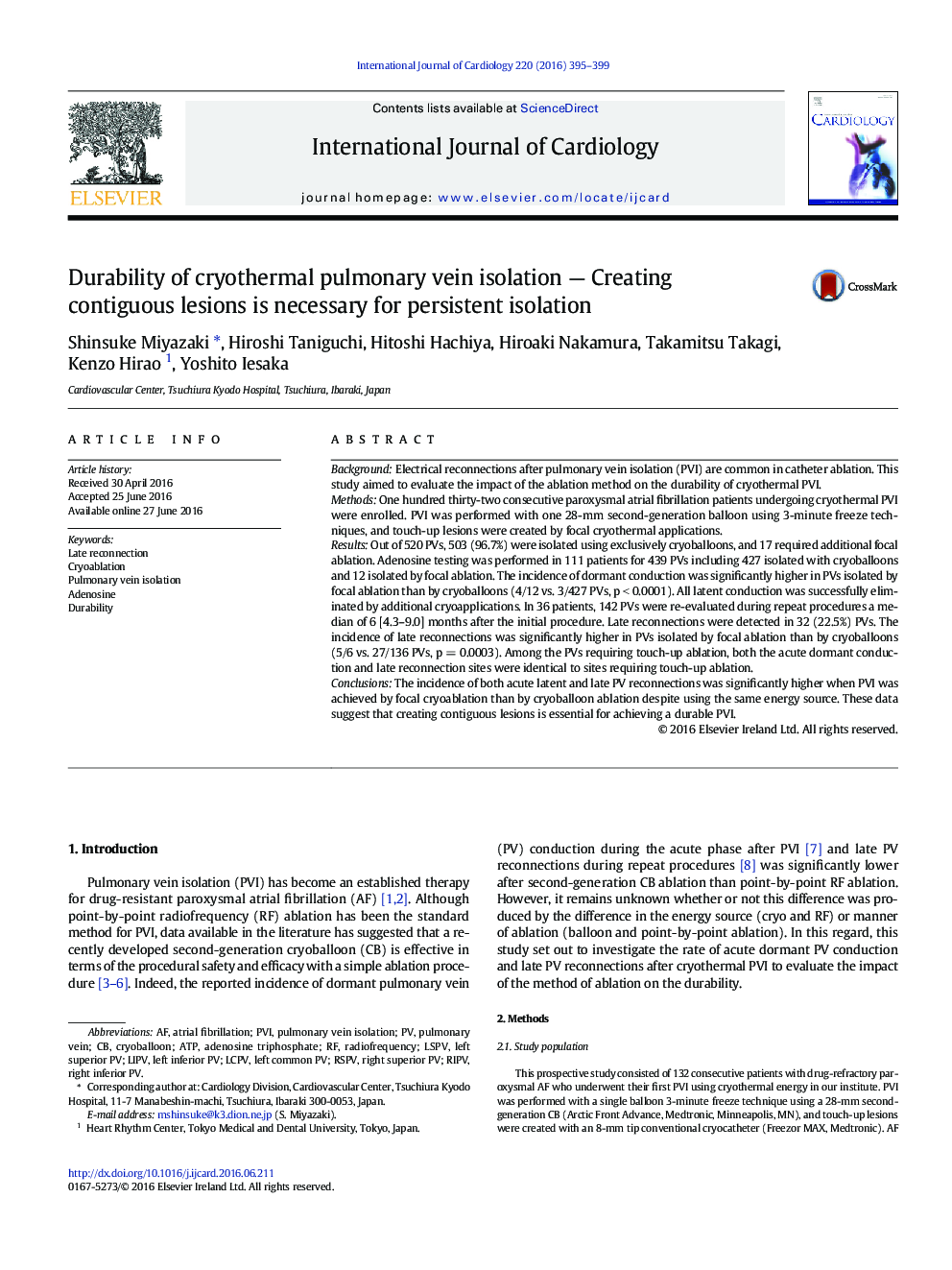| Article ID | Journal | Published Year | Pages | File Type |
|---|---|---|---|---|
| 5963522 | International Journal of Cardiology | 2016 | 5 Pages |
BackgroundElectrical reconnections after pulmonary vein isolation (PVI) are common in catheter ablation. This study aimed to evaluate the impact of the ablation method on the durability of cryothermal PVI.MethodsOne hundred thirty-two consecutive paroxysmal atrial fibrillation patients undergoing cryothermal PVI were enrolled. PVI was performed with one 28-mm second-generation balloon using 3-minute freeze techniques, and touch-up lesions were created by focal cryothermal applications.ResultsOut of 520 PVs, 503 (96.7%) were isolated using exclusively cryoballoons, and 17 required additional focal ablation. Adenosine testing was performed in 111 patients for 439 PVs including 427 isolated with cryoballoons and 12 isolated by focal ablation. The incidence of dormant conduction was significantly higher in PVs isolated by focal ablation than by cryoballoons (4/12 vs. 3/427 PVs, p < 0.0001). All latent conduction was successfully eliminated by additional cryoapplications. In 36 patients, 142 PVs were re-evaluated during repeat procedures a median of 6 [4.3-9.0] months after the initial procedure. Late reconnections were detected in 32 (22.5%) PVs. The incidence of late reconnections was significantly higher in PVs isolated by focal ablation than by cryoballoons (5/6 vs. 27/136 PVs, p = 0.0003). Among the PVs requiring touch-up ablation, both the acute dormant conduction and late reconnection sites were identical to sites requiring touch-up ablation.ConclusionsThe incidence of both acute latent and late PV reconnections was significantly higher when PVI was achieved by focal cryoablation than by cryoballoon ablation despite using the same energy source. These data suggest that creating contiguous lesions is essential for achieving a durable PVI.
